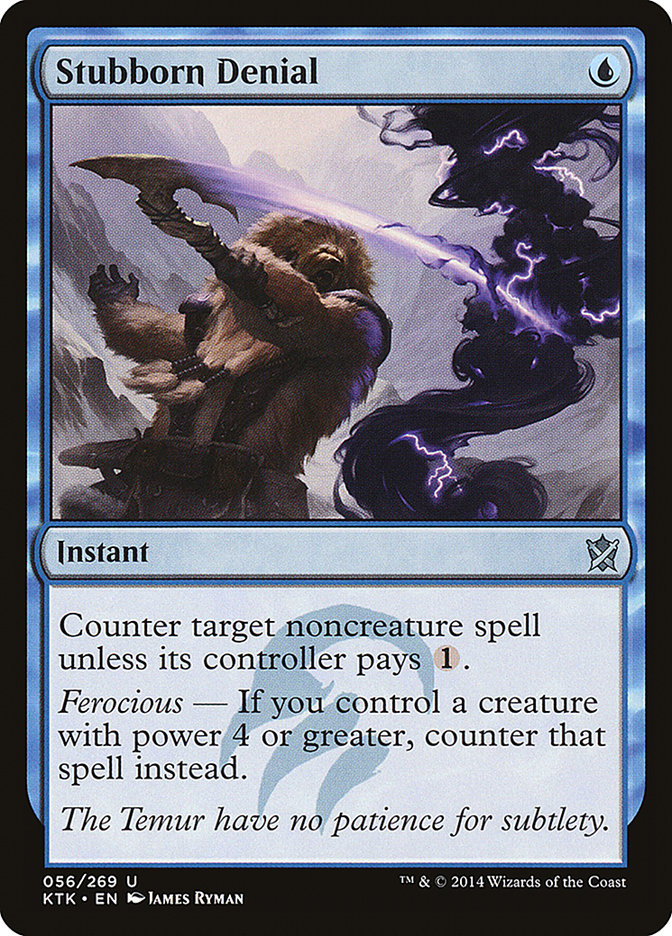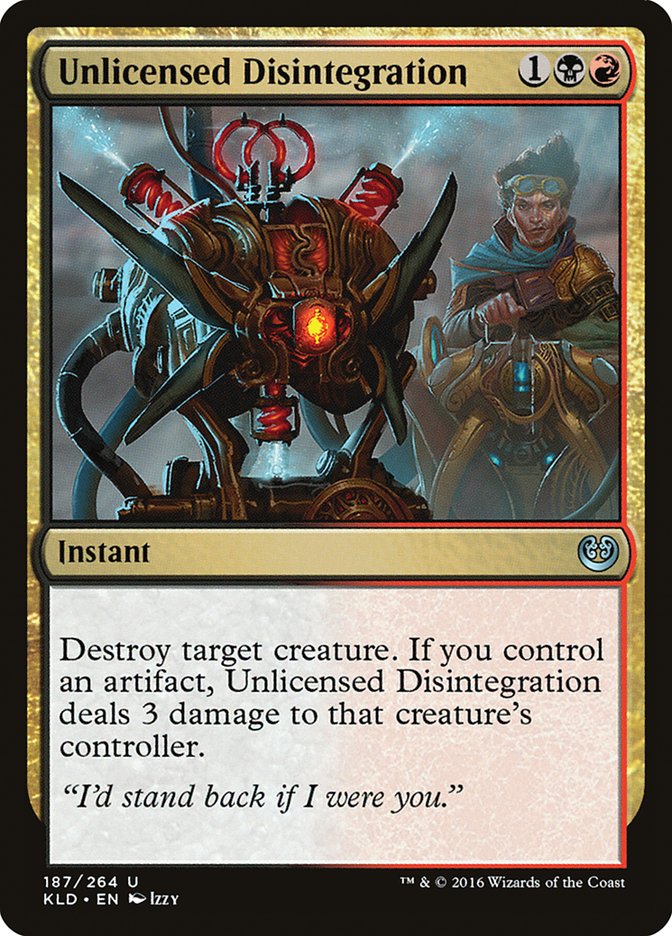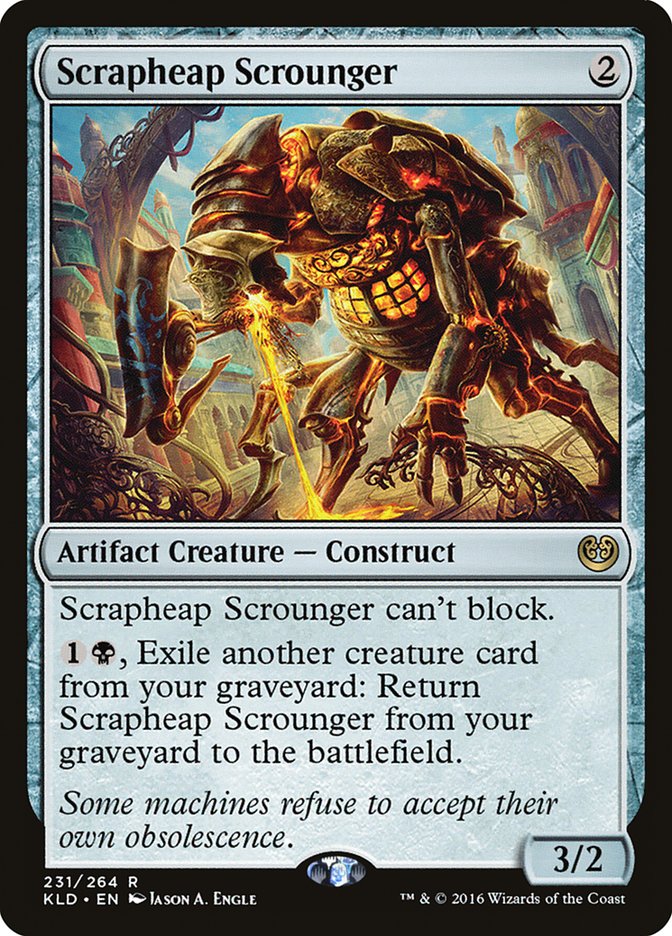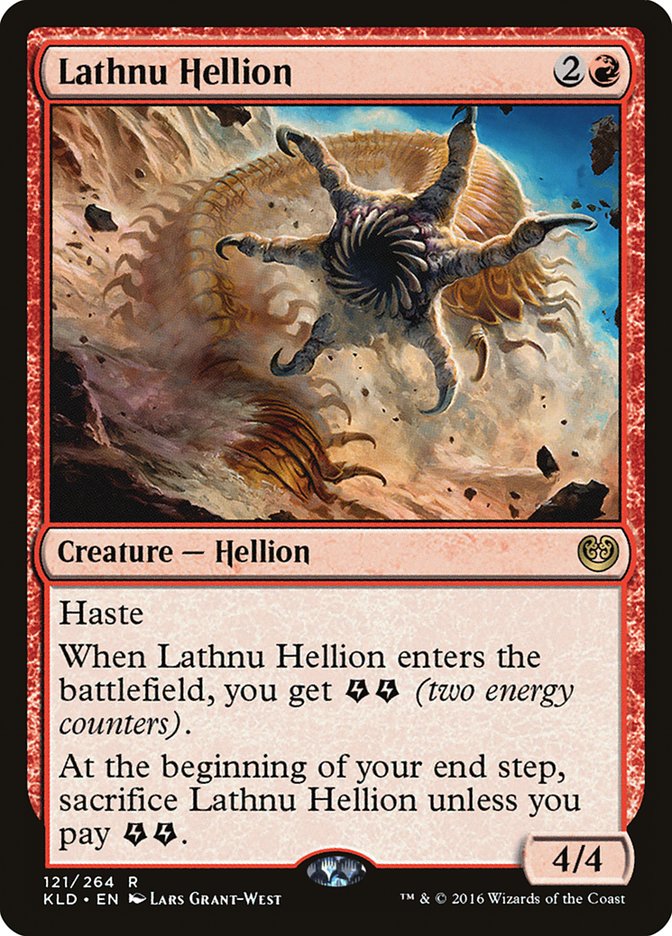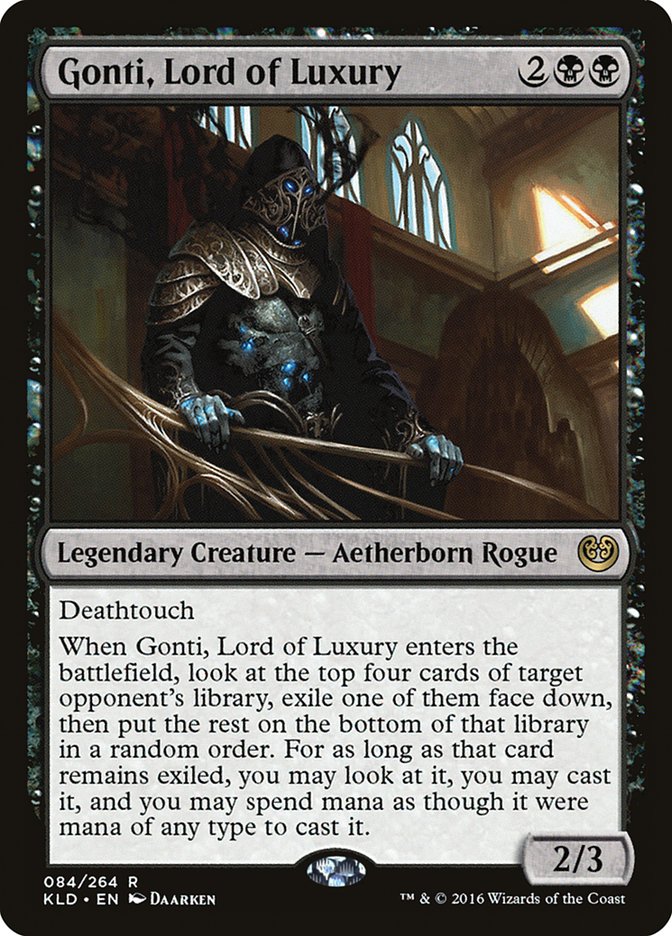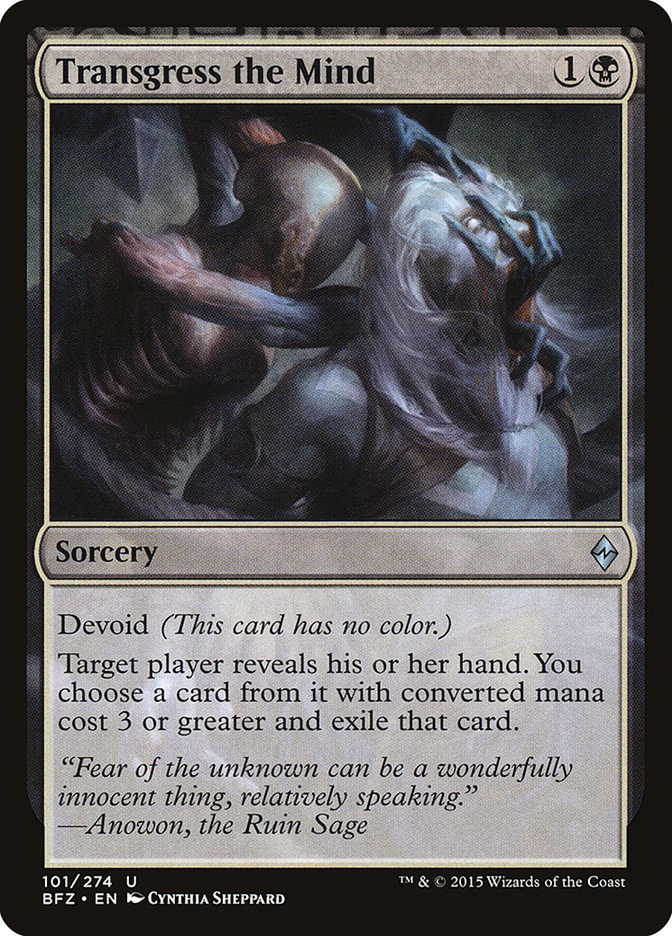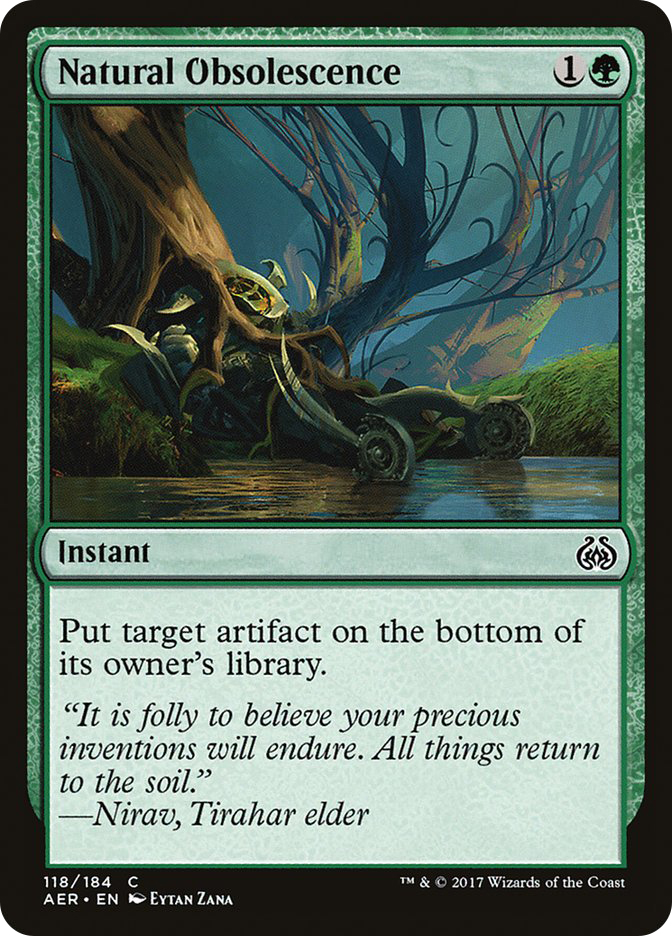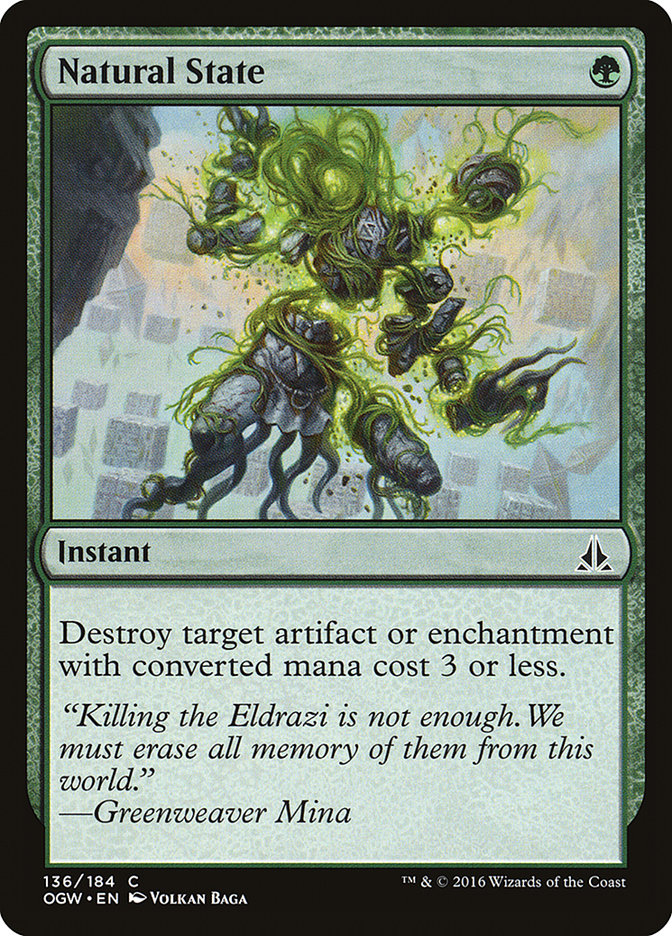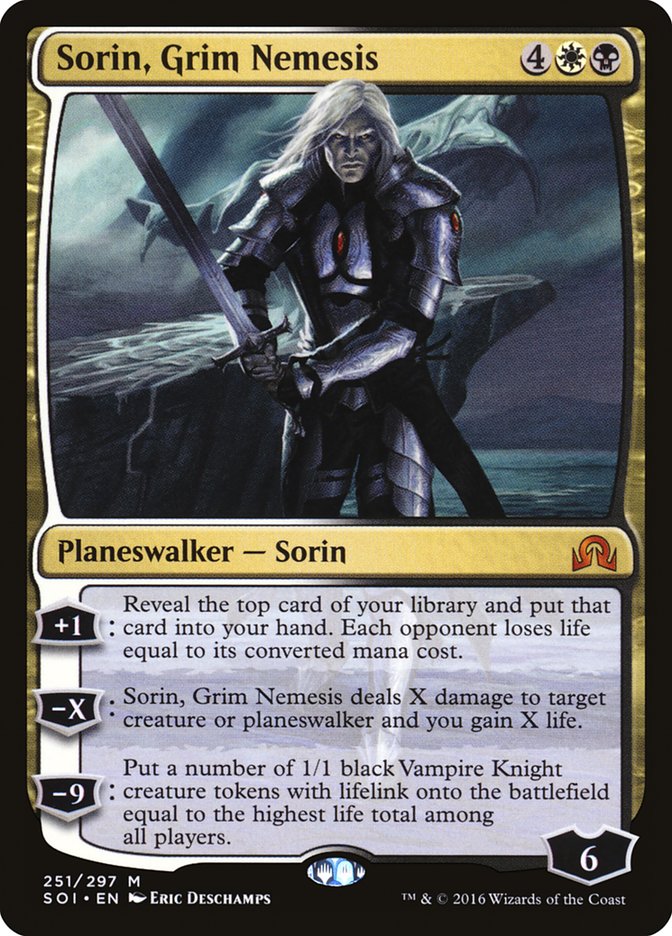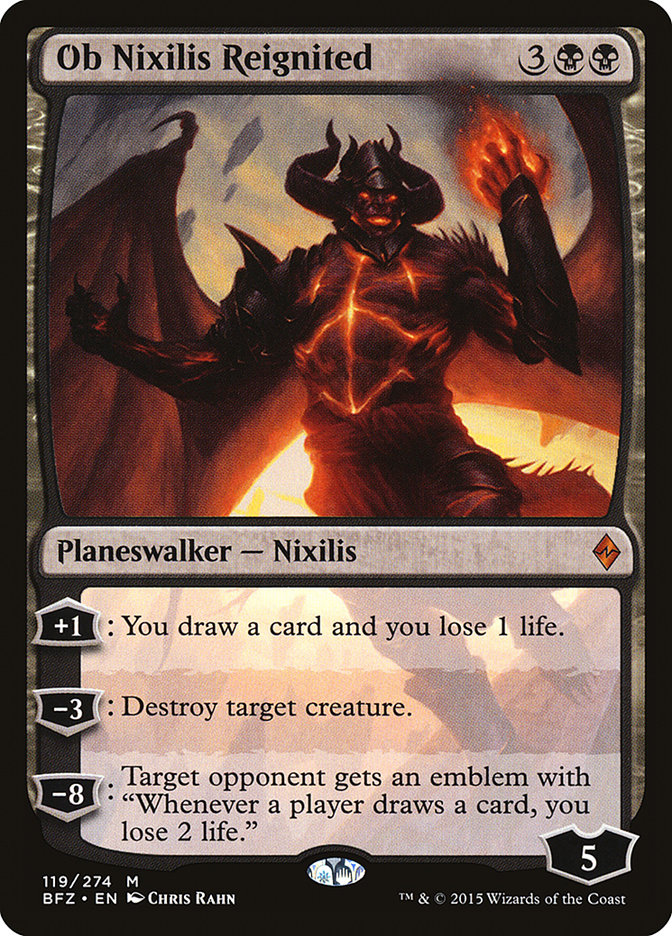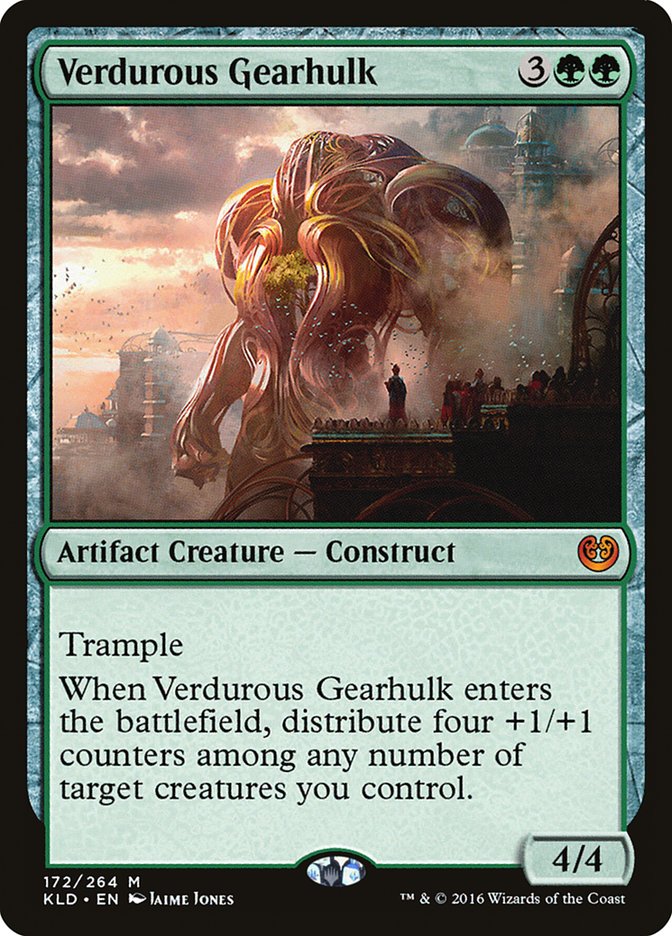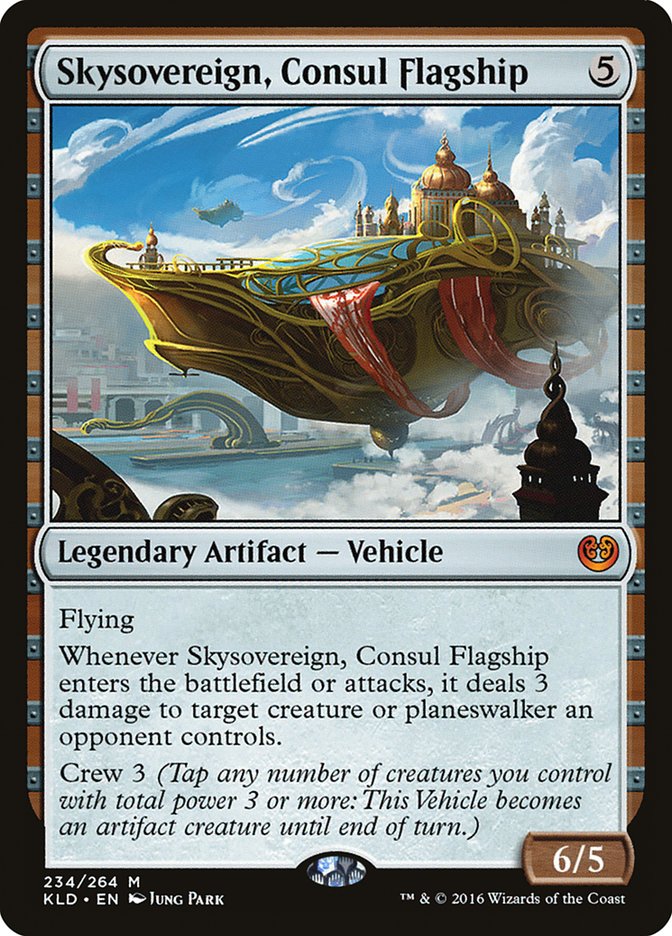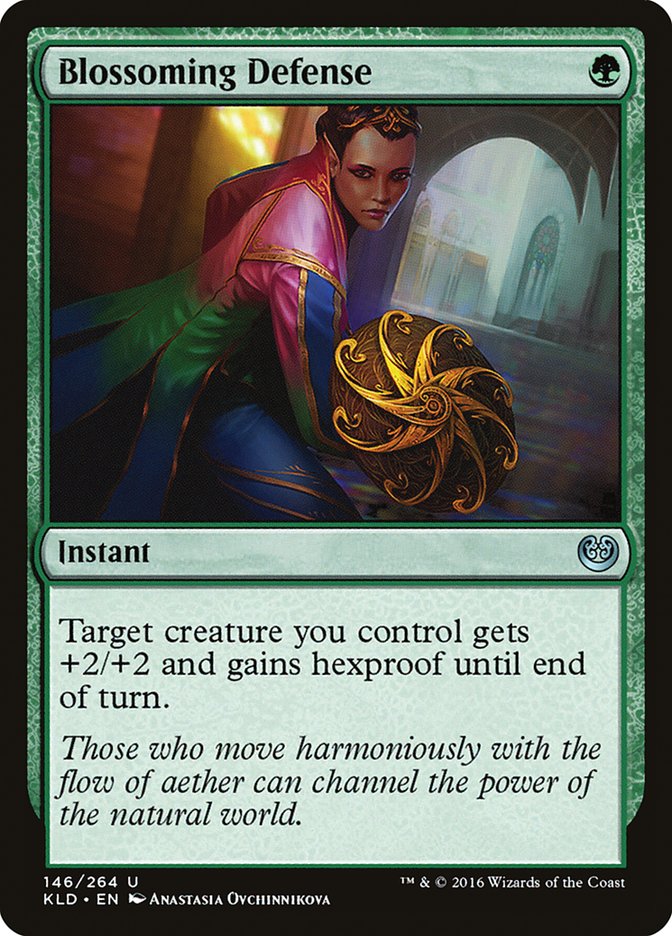How do you break a solved format? For me, this question is one that I’ve asked myself over and over for a decade. The correct response is usually “just play the best deck,” but time and again I find myself on a never-ending quest to beat the best deck instead of just playing it. Why is that? For some, playing “the best deck” is like giving up. The moment that you pick up Mardu Vehicles or Four-Color Saheeli, you already feel like you’ve lost, because you’ve conceded the fact that you can’t do it better.
And that’s a terrible feeling.
We’re all being damaged a little.
I know that the current Standard format is in its swan song, but that doesn’t mean there aren’t still relevant tournaments to prepare for. In fact, this weekend I’ll be playing in a Magic Online PTQ with said Standard format, and I’m at a crossroads. Everyone I talk to just tells me to play Mardu or Saheeli Rai, and they’re probably right. That’s the sad part.
Honestly, the games featuring these two decks are usually pretty intricate, assuming both players have reasonable draws, which leads to some very exciting gameplay. These two decks are obviously the strongest in the format, so why am I fighting so hard against playing them?
The short answer is that I’m stubborn. Time and time again I do my damnedest to “break it” as opposed to falling in line. A lot of you are probably right there along with me. After all, how fun can it be to play a bunch of mirror matches? Well, if most of the field is playing two decks, that means you’re going to be repeating a lot of the same matchups regardless of what deck you decide to play. If you can somehow build a deck that consistently beats both of the top two decks, then that should be the formula to solving the equation.
One big problem with playtesting rogue strategies against the top two decks is that your results may be skewed. A weak opponent, an unexpected sideboard strategy, or a slight variation in one of the best strategies could drastically alter how the games play out. Just think how much better the Four-Color Saheeli decks became when they cut Elder Deep-Fiend in favor of Chandra, Torch of Defiance, not to mention Oath of Chandra singlehandedly changing the dynamics of the B/G Constrictor matchups. When something like that happens, how do we fight back?
Creatures (27)
- 3 Tireless Tracker
- 2 Verdurous Gearhulk
- 4 Longtusk Cub
- 4 Scrapheap Scrounger
- 4 Greenbelt Rampager
- 4 Winding Constrictor
- 2 Rishkar, Peema Renegade
- 4 Walking Ballista
Lands (21)
Spells (12)

Ben Stark did a great job realizing that older versions of B/G Constrictor could no longer keep up with the two best decks. Mardu could outpace you in the early turns, and the Four-Color Saheeli decks could just combo kill you if you didn’t find the right form of interaction. So, instead of sticking to the more traditional builds of B/G Constrictor, Ben Stark decided that splashing Unlicensed Disintegration was the best option. Not only does this version give you some staying power in the form of Scrapheap Scrounger, but it also gives you access to one of the best removal spells in the format.
This version of B/G Constrictor seems to have it all, but I’m still left wondering if it is good enough to give Four-Color Saheeli a run for its money, not to mention how it fares against Mardu. If Ben was able to pilot it to a fourth-place finish at Grand Prix New Jersey, then it has to be good. All the reports I heard from the tournament had nearly every matchup feature a Mardu or Saheeli opponent, which means Ben had to beat quite a few of those archetypes on his way to the semifinals. Ultimately, he was dispatched by Four-Color Saheeli, but that could be due to a number of reasons.
My initial testing of B/G Constrictor before Pro Tour Aether Revolt pushed me down a number of roads that all led to lowering the curve. Scrapheap Scrounger gave you a lot of breathing room against Saheeli Rai decks, as they were usually chock-full of removal. The recurring threat let you continue giving the beatdown, while your removal spells helped contain the Saheeli Rai combo. The major problem of playing the card in B/G Constrictor was that it failed to play defense against Mardu, and was often overshadowed in B/G Constrictor mirrors. Now that we don’t have to worry too much about B/G Constrictor mirrors, we have a lot more room to make sure we can attack the two top decks in the format.
The best direction a deck like this can take is to make your maindeck rock-solid against the top two decks. While there aren’t a lot of cards that overlap in the two matchups (one of the reasons why no one can seem to beat both strategies consistently), you need to make sure you’re able to sideboard out all your weaker cards for home runs in those matchups. Ben went a slightly different route here, giving himself ways to fight the mirror or rogue strategies trying to fight the two best decks. That is a fairly obvious thing to recognize when you see his sideboard creature package. Glint-Sleeve Siphoner and Lathnu Hellion are obvious nods to control strategies, while Gonti, Lord of Luxury is primarily there to help fight attrition battles in the mirror.
The spells tell a similar story, with one small exception. Transgress the Mind is a potential sideboard card for the Saheeli Rai decks, but it isn’t nearly as good as most people think. The turn you’re spending casting Transgress the Mind is a turn you’re not applying pressure or killing their creatures. You’re spending two mana and a card for zero mana and a card, and that’s a pretty big deal for a deck like this. The easiest way to beat a deck like Four-Color Saheeli is making sure you apply enough pressure while having one or two answers for their combo when the time comes. Discard effects don’t really have a place here.
Natural Obsolescence and Natural State are both great sideboard cards against Mardu Vehicles, as they give you clean answers to some of the more annoying artifacts that they could throw at you, but that’s not taking into consideration the oddball sideboard plans they tend to implement against your deck. They like to go bigger, have more removal, and use permanents that are tougher to deal with. Chandra, Torch of Defiance and Gideon, Ally of Zendikar are both tough to interact with if they draw enough spot removal to kill your early threats. At the end of the day, that should be their plan to beat you. While I don’t foresee them sideboarding out too many artifacts, there is a very good chance that these cards just won’t be useful when you draw them.
We need to understand how they’re going to sideboard against us before we can build a proper sideboard to attack them efficiently.
Creatures (21)
- 2 Archangel Avacyn
- 4 Thraben Inspector
- 3 Thalia, Heretic Cathar
- 4 Scrapheap Scrounger
- 4 Toolcraft Exemplar
- 4 Walking Ballista
Planeswalkers (4)
Lands (24)
Spells (11)

I expect quite a few people to copy Paul Rietzl’s list when it comes to Mardu Vehicles. It doesn’t get fancy with Veteran Motorist, and as a result it gets to have a much smoother manabase. As you’ve probably guessed, Fatal Push is much better than Shock against the mirror, and neither is particularly exciting against Four-Color Saheeli. In essence, this deck is just W/B Aggro splashing Unlicensed Disintegration, which means we can afford to play more copies of Swamp and more reliably cast Fatal Push.
The sideboard here also projects a desire to move away from small creatures and into the realm of Planeswalker Control. Nahiri, the Harbinger seems like an odd addition to the strategy, but once you realize how much easier it is to cast than Chandra, Torch of Defiance, you’ll get it. Oath of Liliana might seem out-of-place, but it does a great job at killing a large creature after you sweep up their smaller ones with Fatal Push and can provide some added value if you start casting planeswalkers afterward.
I’m not sold on Sorin, Grim Nemesis or
So there it is: a sideboard plan that involves removing a lot of the early threats in favor of heavy hitters after sideboarding. This plan is great against a swath of artifact destruction and cheap spot removal, and one of the main reasons why a sideboard plan of four Disenchant effects might not be the greatest idea. So how do we fix this?
If you think of Mardu Vehicles in terms of a post-sideboard build, you need to understand that there is a good chance you’re no longer in the control role. Assessing what role you need to be (control/beatdown) is incredibly important, but that might not exactly be possible until the third game of the match. That’s one of the advantages to playing a deck with a transformational sideboard plan, as your deck can change drastically between games and it is up to your opponent to guess what side of the deck you’ll be leaning on.
If I’m Mardu Vehicles and on the play, I want to be the beatdown. In those scenarios, as the B/G Constrictor player, you probably want cheap removal and ways to kill Heart of Kiran and Scrapheap Scrounger. You want most of your cheap spells to make sure it is more difficult for them to run you over. However, if the Mardu Vehicles player thinks that being “the beatdown” is impossible, that could leave you with some less-than-ideal cards in your deck. Like I said, it will all be a guessing game, and there is no guarantee you’ll come out on top.
Fatal Push from the Mardu Vehicles maindeck, much like Oath of Chandra out of Four-Color Saheeli, is a major reason why B/G Constrictor was unable to keep up. They were able to evolve while your deck stayed mostly the same. More aggressive versions of B/G Constrictor are probably a bit better in these scenarios, as they allow you to deploy more threats in the early turns and hopefully grind through all the removal. Overloading the cheap removal from your opponents is the best chance you’ll have of fighting through it, which is another reason why Scrapheap Scrounger has been so good in testing. In fact, if everyone leans toward Rietzl’s list of Mardu Vehicles, then I probably wouldn’t even bother sideboarding it out.
Creatures (17)
Planeswalkers (7)
Lands (21)
Spells (15)

I don’t think many people will consider cutting Baral’s Expertise, but if they do, then that’s very good for B/G Constrictor decks. From the mouth of Brad Nelson, who is Corey Baumeister’s brother and played the same list, the goal against B/G Constrictor is to combo kill them. I didn’t believe it at first, because it seems pretty hard to do with all of the cheap removal at your disposal. But if you think about it, B/G decks only have four ways to consistently break up the combo at instant speed, and if you’re siding in Dispel to counter those, the odds of you assembling the combo increase dramatically if you’re able to deal with Walking Ballista.
The main point here is that beating B/G Constrictor on the battlefield is tough to do. Your removal doesn’t deal with Verdurous Gearhulk all that well, and your creatures can’t trade in combat if Winding Constrictor gets off the ground. And if that’s the case, then your best bet is to try to set up the combo with one piece of protection while your early removal spells stifle their ability to put pressure on you. After all, Verdurous Gearhulk isn’t nearly as impressive if you untap and kill them afterward.
Without Baral’s Expertise, this matchup gets a little bit easier from the B/G side of things. You don’t have to fear that big swing in tempo and aren’t really forced to tap out when the situation looks unsafe. While many people keep telling me that Four-Color Saheeli is heavily favored against B/G Constrictor decks, I just don’t see it. Personally, my record with B/G Constrictor is very good against this deck, but three copies of Oath of Chandra (and ways to blink it) could very well be the nail in the coffin. Whether or not that changes with Scrapheap Scrounger added to the mix has yet to be determined.
Looking at their sideboard, the only cards that they’ll want against you are Dispel (if they’re going hard on the combo), Tireless Tracker (if they plan on grinding out your removal spells), and Skysovereign, Consul Flagship (a big threat that doubles as removal for your smaller creatures). Unlike in the Mardu Vehicles matchup, they aren’t going to be doing anything drastically different here between pre- and post-sideboard games. The likelihood of comboing you increases slightly with the addition of Dispel, but mostly your plan stays the same: establish a battlefield presence and try your best to disrupt their combo when you can.
Like Splinter Twin decks in Modern, you’re sure to be in a lot of spots where you have to tap out and hope they don’t have the combo. That’s just a fact of how the deck operates. However, putting yourself in a position to win the game in a few turns can have a lot of value against a deck as resilient as Four-Color Saheeli. Keeping the right mix of pressure and disruption is key to making sure you cover all fronts, but not all of your draws will line up that way. In those scenarios, you’ll have to make a decision between bluffing a removal spell or keeping your foot on the gas. Since they do such a good job of containing your early pressure, thanks to the added removal, my suggestion is to bluff rarely, and especially so if you don’t have a clear advantage on the battlefield.
Against both of these decks, and in some cases against the mirror, you may also want access to Blossoming Defense. Protecting your early threats from Fatal Push or Unlicensed Disintegration is a big deal, but you also have to realize that players are tapping out a lot in this format. Combat tricks tend to be much stronger in formats where people continuously tap out as to not fall behind. And when players have strong removal and tend to tap out a lot, cards like Blossoming Defense are phenomenal because they can work on both fronts (protection and relevant pumping ability).
While too many copies of Blossoming Defense can lead to some weaker hands against aggressive starts from your opponent, it is generally a fantastic card when you’re on the play. Not only does it give you an extra bump to help kill planeswalkers, but it lets your curve of “two-drop into two-drop plus protection” foil any plans they could have of keeping up. While Blossoming Defense won’t be the end-all, be-all in most games, it has more than proven its worth in my eyes.
With all of this in mind, here is the current version of B/G Constrictor I’d recommend.
Creatures (25)
- 2 Tireless Tracker
- 4 Grim Flayer
- 4 Verdurous Gearhulk
- 4 Scrapheap Scrounger
- 4 Winding Constrictor
- 3 Rishkar, Peema Renegade
- 4 Walking Ballista
Lands (23)
Spells (12)

The lack of the red splash is mostly a comfort thing for me. This version of B/G Constrictor has done consistently well for me throughout the evolution of this Standard format. Grasp of Darkness doesn’t do as much damage as Unlicensed Disintegration, but costing one less mana is a pretty big deal in a lot of scenarios where you’re trying to cast two spells in the same turn. The reliance on the energy theme is also not something I want to do all that much.
Adding another color to your deck, much like Jund Energy or Temur Tower, comes at a significant cost. While Attune with Aether and Aether Hub both help you splash those extra colors, the color requirements on many cards will cause you to lose games against decks like Mardu Vehicles. While I do like Greenbelt Rampager in a vacuum, it is basically the only energy-based card I like in the entire deck. Everything else is just there to justify playing Attune with Aether over Traverse the Ulvenwald.
I’m not saying this deck is better than Jund Energy. Honestly, I’m going to be playing a lot of matches of Standard in the next few days in preparation for the Magic Online PTQ, and I could very easily shift toward Jund Energy or one of the two top decks in the format. But I haven’t given up yet. If anything, playtesting with the top two decks has only made my resolve for playing something different all that much stronger. While there are times where you should just give in and play the best deck, I’m not ready yet, and I’m not going to do it without a fight.



